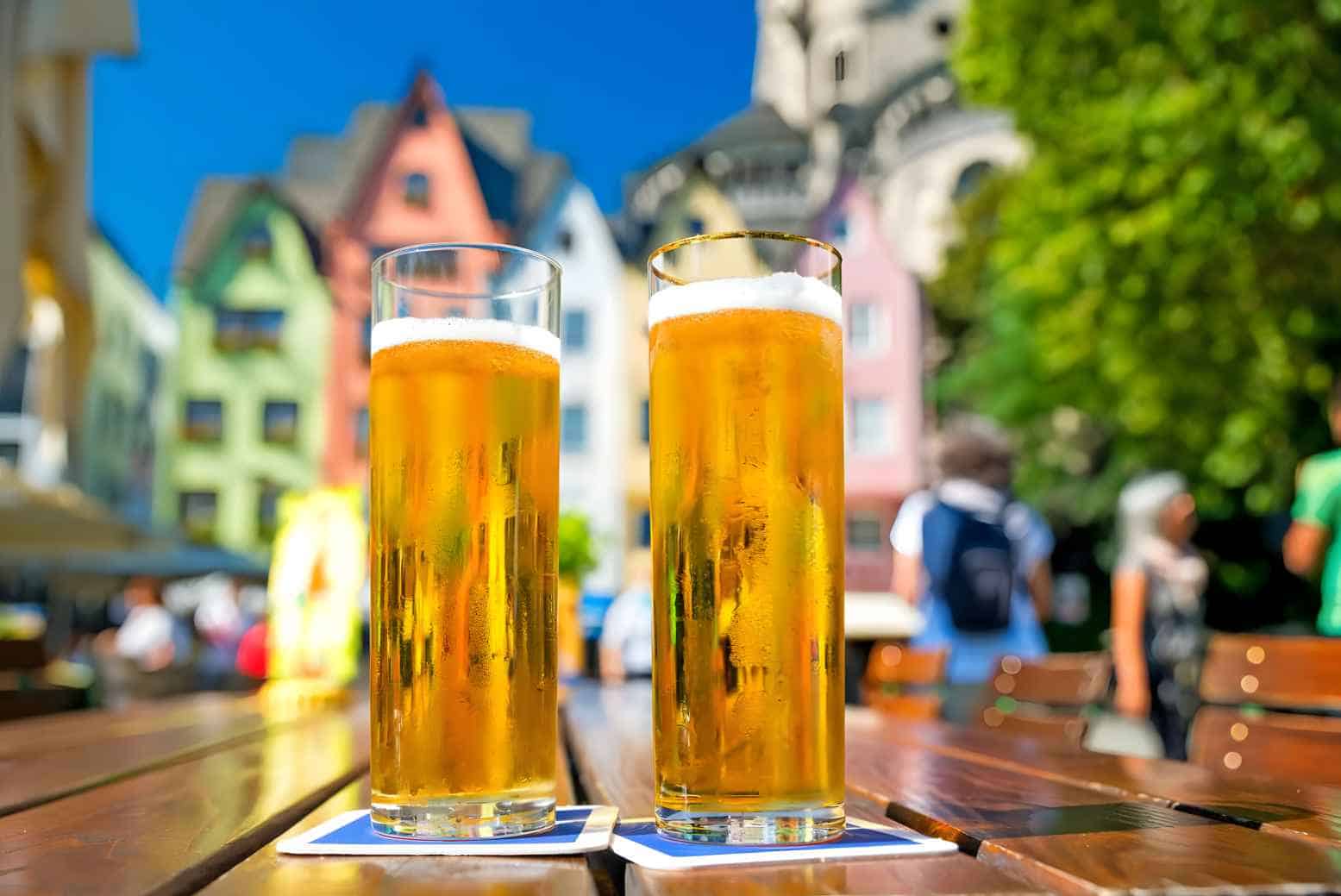Germany has a lot of things to offer, including beer. And you don’t have to wait for Oktoberfest to try whatever beer you are eyeing. If there’s a beer that you should check out, it’s the Kolsch Beer. What is a Kolsch Beer, and why should you know about it?
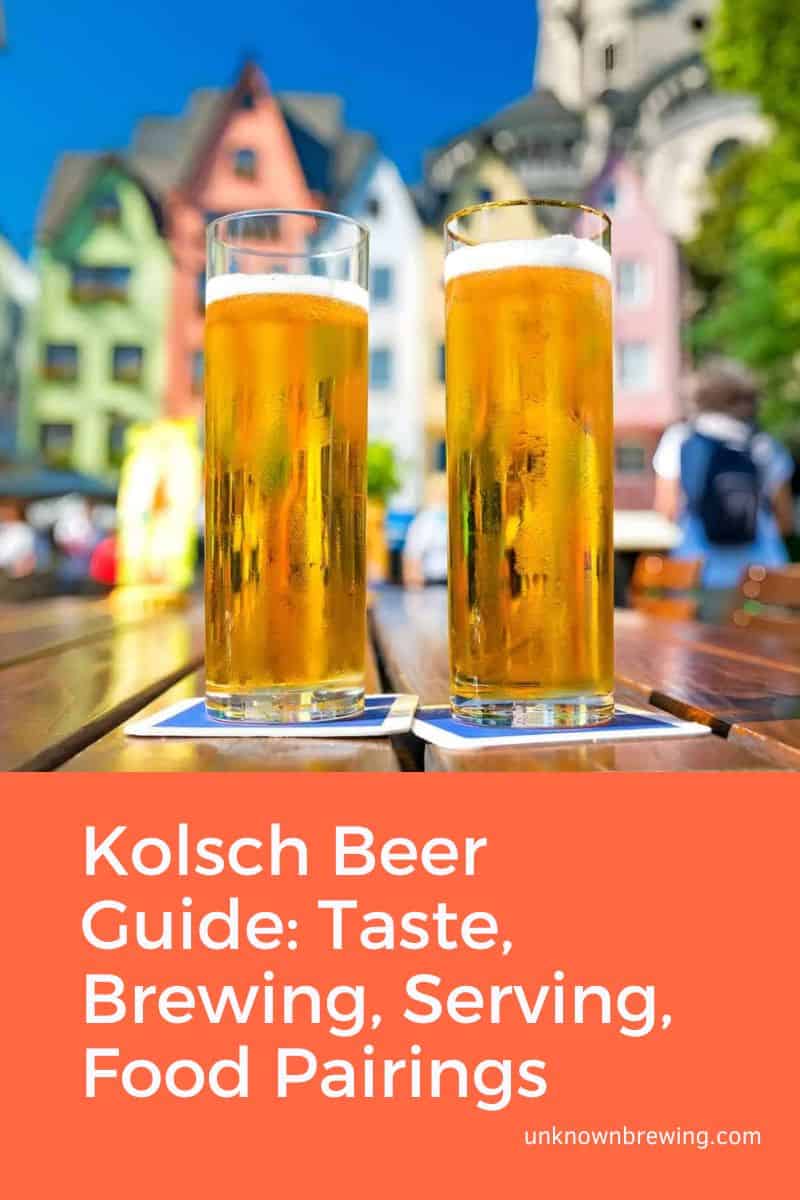
Kolsch Beer: An Introduction
Beer is a really popular beverage in and out of Germany. If you happen to be in Cologne, a city in the Western part of the country that’s near the Rhine River, don’t forget to try the Kolsch beer.
Kolsch beer has been around for ages. It’s a light-colored beer that sometimes comes in gold or yellow color.
One of the most interesting things about this beer is the debate about whether it’s an ale or a lager. Well, it’s categorized as an ale. However, it has some lager elements. So it’s somehow safe to say that it’s like a hybrid beer.
If you love knowing the history of what you are eating or drinking, the Kolsch beer’s origin story might interest you.
People in Cologne have been enjoying Kolsch beer for centuries. There was a time, perhaps towards the end of the 18th century, when Cologne-based beer brewers realized they were up against other varieties of beers from outside the region.
They had to figure out how to compete with other brewers. Well, they came up with a solution. The answer was the Kolsch beer. Since this is an original Cologne beer, it only makes sense to name it after the city’s German name, Köln.
When it comes to beers, the Germans are not playing. And in Cologne, it’s no different. A beer can only be referred to as Kolsch beer if made within a 30-mile expanse of the city. Anything brewed outside the city’s range can’t be considered a Kolsch beer.
The Profile: Kolsch Beer
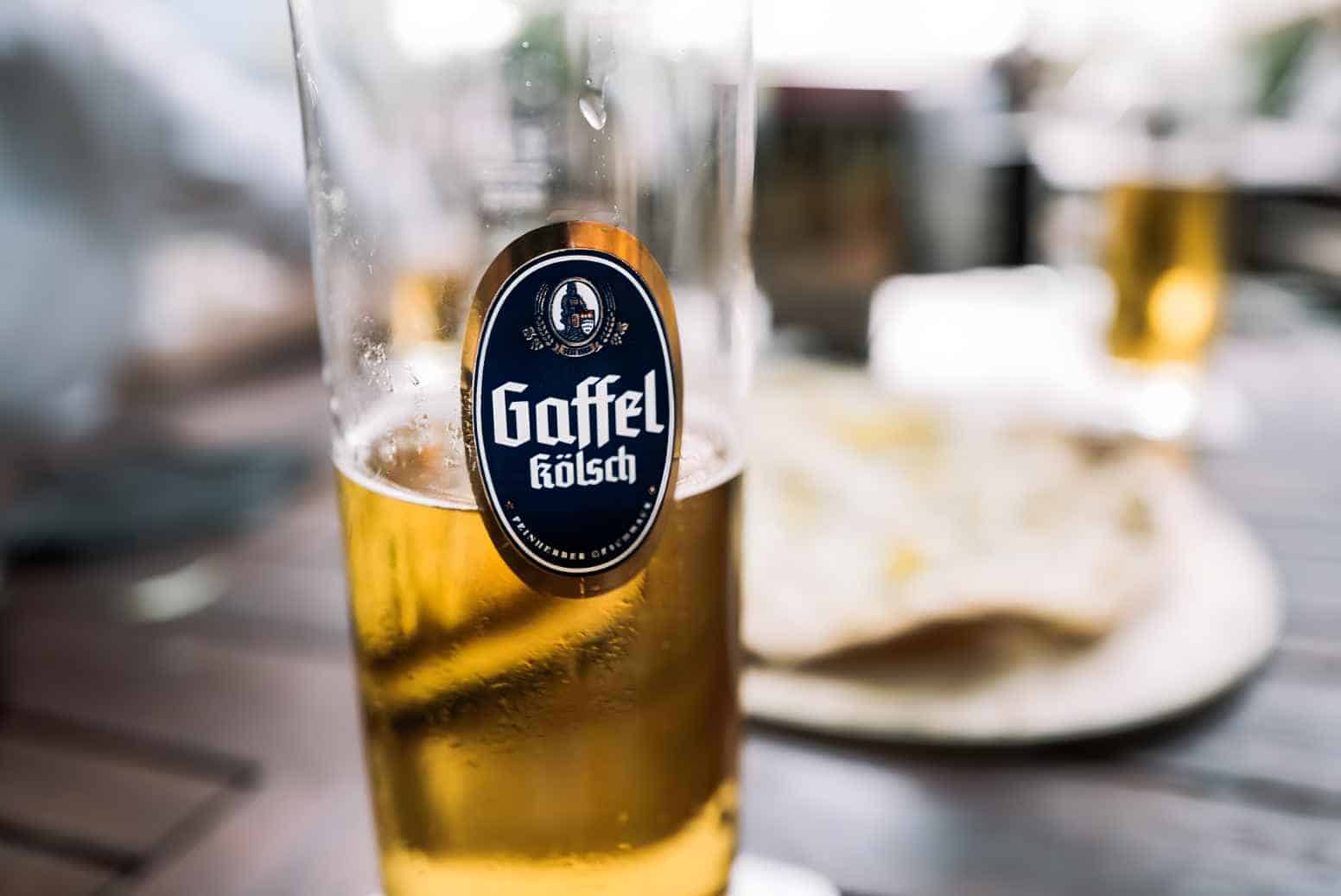
There’s no better way to get to know a beer than by observing and drinking it. By savoring each sip, you get a feel of what the Kolsch beer is about. Here are some important details about the Kolsch beer that you might find interesting:
Color Range | 3 to 6 SRM |
Original Gravity | 1.044 to 1.056 |
Final Gravity | 1.007–1.011 |
IBU Range | 18 – 30 |
ABV Range | 3.5 – 5.0% |
Appearance | Pale or light yellow to golden color |
Aroma | ● Hints of fruits ● Malt ● Spice |
Flavor | ● Light ● Slight Fruity flavor |
Mouthfeel | ● Light and crisp ● Soft and sweet ● Medium carbonation level ● Balance sweetness and bitterness |
Serving & Storage Temp | Serve at around 50°F |
Shelf Life | 3 Months |
Food Pairings | ● German sausages like Bratwurst ● Nuts ● Seafood ● Cheese ● Rye bread with Cheese |
It seems clarity is an important indicator of Kolsch beer. It’s one of the defining characteristics of this specific kind of German beer.
When it comes to flavor, it seems there is a balance in the Kolsch beer. You can taste the malt and sweet and bitter elements of other ingredients. There’s even fruity hints from the yeast fermentation.
Making Kolsch Beer
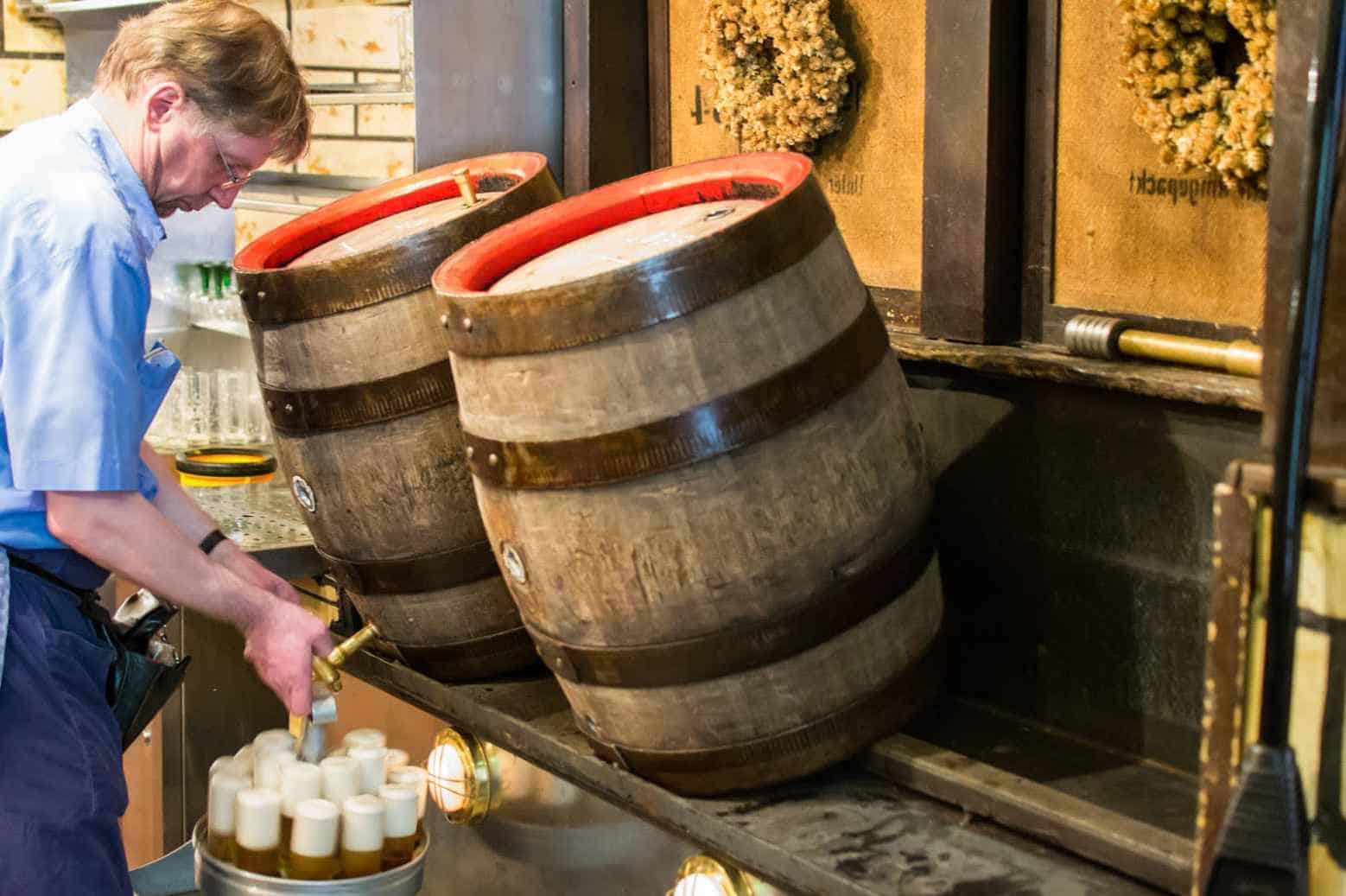
The production of Kolsch beer in Germany is regulated. It must adhere to a Beer Purity Law made in the 16th century. Kolsch is not the only beer that has to follow this law. Other kinds of traditional German beers must do so as well.
For the Kolsch beer, it should be top-fermented with hints of bitter hops. Basically, it involves the fermentation processes of ale and a lager.
Brewers of the Kolsch beer were thriving before the Second World War broke out. It took the Kolsch beer industry a couple of years to recover. While the number of breweries making Kolsch beer is much lower than in the 1940s, there are still a couple left in Cologne to continue the tradition.
Some brewers outside Cologne, like the ones in the US, adopted the brewing method and tagged their products as Kolsch beer. But of course, if based on regulations, those are technically not Kolsch beer.
Kolsch Beer Ingredients

Some consider brewing traditional German beer as an art form, and it’s no different from the Kolsch beer. Following the Reinheitsgebot (also known as the German Beer Purity Law), these are the essential ingredients to make Kolsch beer:
- Hops
- Malt (Germinated Barley)
- Water
- Yeast
If these simple, high-quality ingredients are paired with tried and tested brewing practices, they will generate great Kolsch beers. Do note that each brewery, whether they are a major or minor one, has its secret recipe or concoction.
The Brewing Process
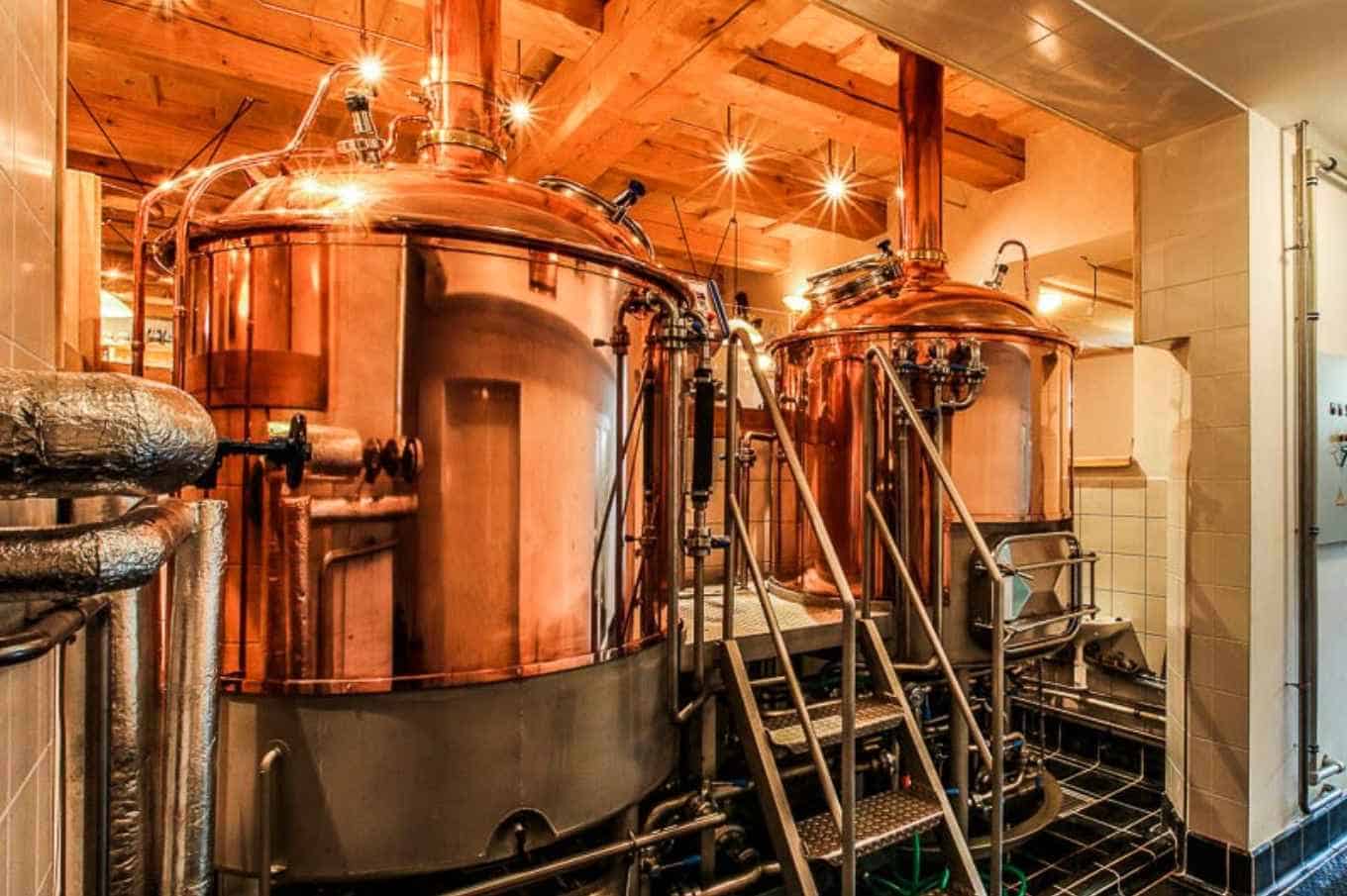
When brewing Kolsch beer, every ingredient and process should be accurate. If you make one wrong move, it could affect the batch you are brewing, especially if you aim to produce this clear beer. Here’s an overview of how Kolsch beer is usually made:
1. The brewing process starts with combining the ingredients like malt and water and heating them. A brewer can either use the following:
- German Pilsner
- Vienna Malt
- Pale Malt
- Wheat Malt
2. Hops are also added to the mixture. Once again, the type of hop depends on the brewer’s recipe. For Kolsch beer, brewers might opt for either of these hop varieties:
- Spalt
- Hallertauer
- Tettnang
- Mittelfruh
3. While all the ingredients heat up, the liquid byproduct, referred to as wort, is produced. The liquid byproduct is drained and moved to another container. It is where fermentation happens after yeast.
4. During the fermentation process, the alcohol forms and develops. Since Kolsch beer is referred to as a top-fermented beer, you will find the yeast deposited on top of the fermented wort.
5. Kolsch is a beer that goes through a warm fermentation process. It means that the temperature should be between 59 to 60 °F, which is perfect for ales like Kolsch beer.
6. After the Kolsch beer finishes warm fermentation, it goes through a process that is usually meant for lagers. The fermented Kolsch beer is moved to somewhere cold.
7. Storing the beer in a cold environment helps beer develop and deepen its flavors. It also aids in making this light-colored beer look even clearer.
8. After a couple of weeks in cold storage, your Kolsch beer is ready! As with traditional Kolsch beer, the fresher it is, the better!
What Makes Kolsch Beer Different From Altbier?
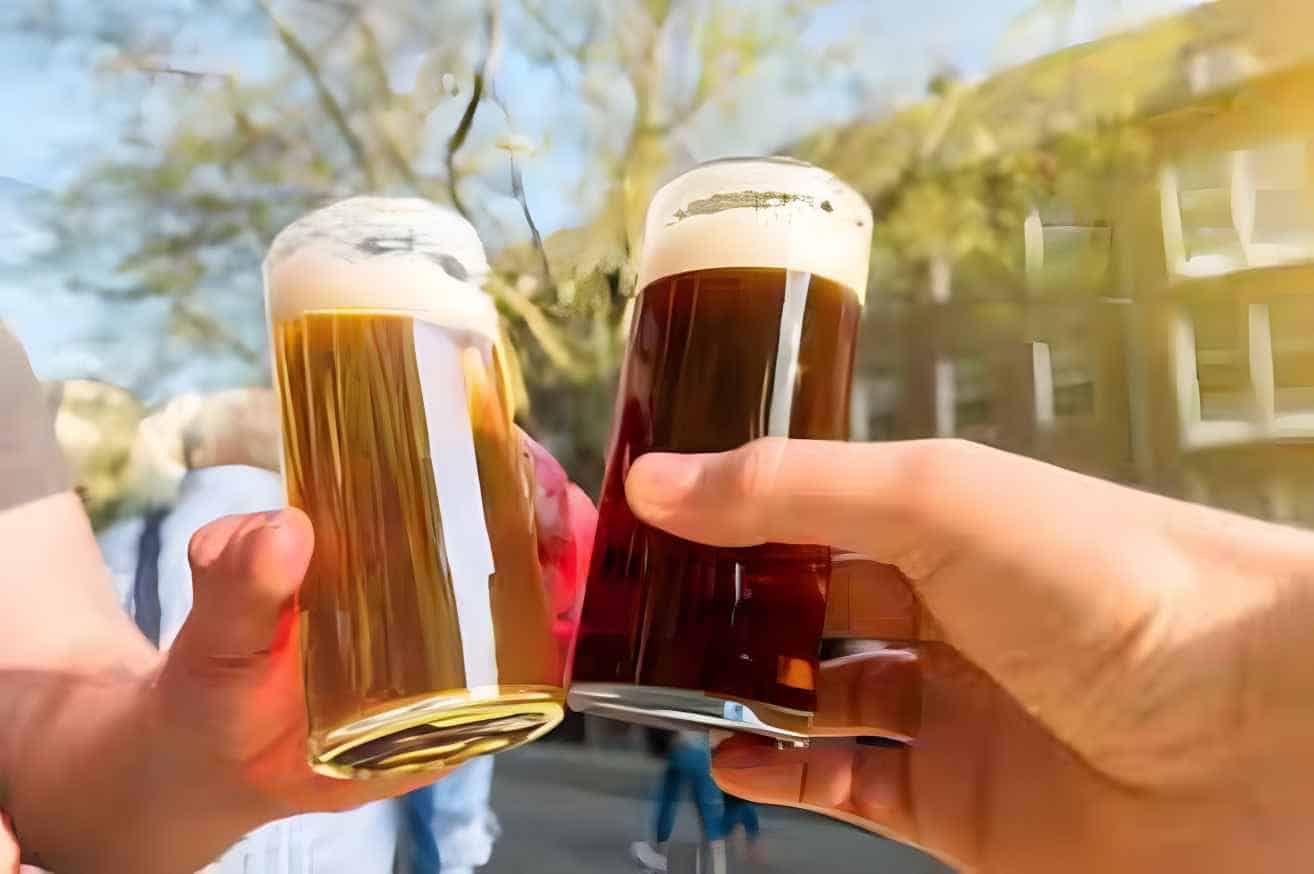
Some people confuse Kolsch beer with another German beer called Altbier. The latter comes from the nearby city of Dusseldorf. While these two beers share some similarities, especially the brewing process and proximity of their origin cities, they are ultimately different. Here’s how to easily tell them from each other:
Kolsch Beer | Altbier | |
Origin | Cologne | Dusseldorf |
ABV | 3.5 to 5.0% | 4.6 to 5.6% |
Color | Pale to Golden Yellow | Copper to Brown |
Taste | Light, crisp with fruity hints | Crisp, clean, and malty |
Even just by looking at these two beers, they clearly differ from each other. The next time you find yourself at a brewery or a bar serving these beers, you know which one you are getting, especially if you are eyeing the Kolsch one!
Best Way To Drink And Enjoy Kolsch Beer
A trip to a Brauhaus to drink Kolsch beer would be a fun thing to do! While you can drink Kolsch beer anywhere, drinking it at a brewery would elevate your beer-drinking experience.
When you’re at a Brauhaus, they will serve the Kolsch Beer in a glass called a stange. In the German language, that word translates to rod. Don’t be surprised if you see the server handing you the Kolsch beer in a tall, cylindrical glass.
You would be able to fully taste the great flavors of the Kolsch beer if it’s served chilled, roughly between 40 to 45°F. Freshness is also a factor in serving Kolsch beer. Through the stange, you would also see how clear and crisp this beer is.
As soon as you have a stange of Kolsch beer in your hands, drink it as soon as you can. You won’t fully enjoy it if it’s warm or it has been sitting in the room.
Trying Different Kolsch Beer From Germany And Beyond
If Kolsch beer has tickled your fancy, you can’t miss checking out some of the best Kolsch beers around. While each beer falls under the Kolsch category, they still have their own identity.
Whether you are a Kolsch beer purist or not, you have to admit that it makes drinking this kind of beer even more exciting as you have more varieties to explore.
Alcohol Content | Flavor Profile | |
Gaffel Kolsch (Germany) | 4.8% | ● Hint of Hoppy Bitterness ● Light and Refreshing |
Sion Kolsch (Germany) | 4.8% | ● Slight Bitterness ● Herbal and Earthy |
Sunner Kolsch (Germany) | 4.8% | ● Crispy and Dry ● Sweet and Refreshing |
Rocky mountain Kolsch (United States) | 5.0% | ● Fruity with hints of bitterness |
Fort Point KSA (United States) | 4.6% | ● Smooth and Flavorful |
These are just some of the Kolsch beers you can find in the market today. If you’re in Cologne, it’s not difficult to find breweries making and serving different kinds of Kolsch beers.
Say “Ja” To Kolsch Beer
Whatever your beer preference is, you should at least give the Kolsch beer a try. Now that you know what a Kolsch beer is, consider it another addition to your beer vocabulary! It has everything you need in a beer – great taste and rich brewing history!
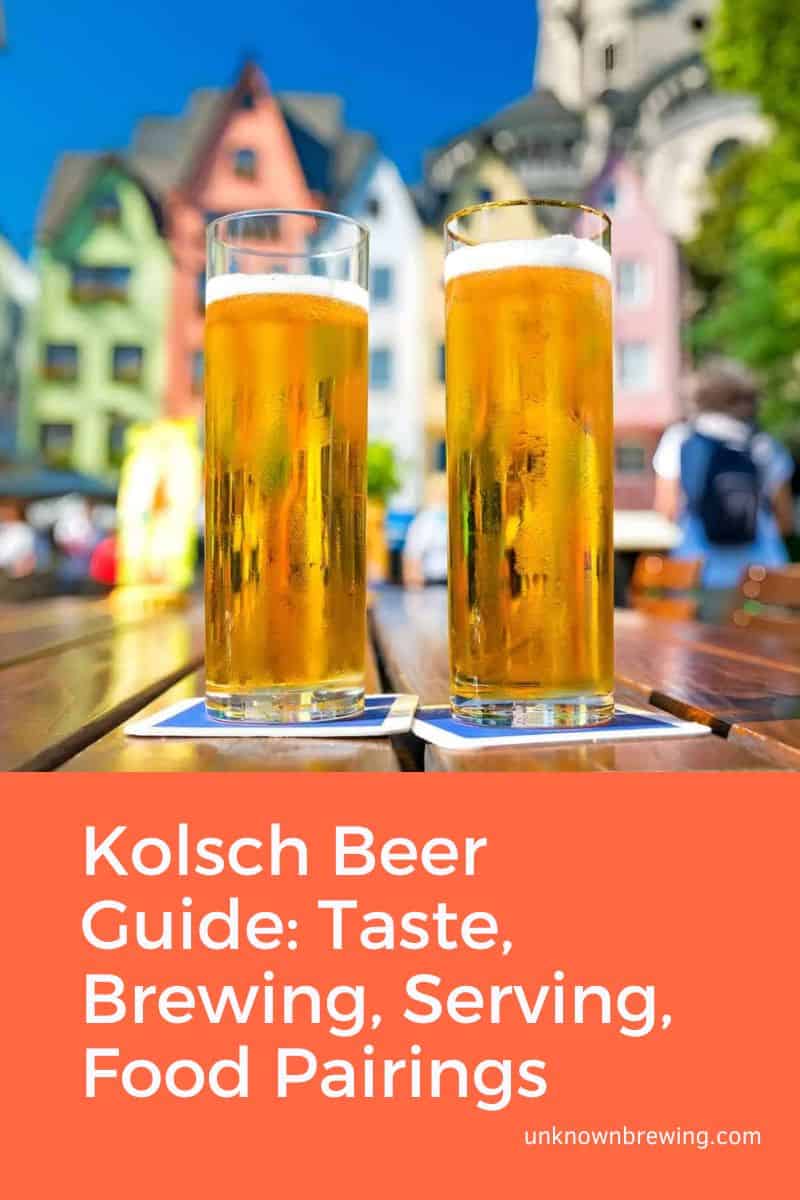

As a homebrewer, Michael would get frustrated about the lack of brewing information on the internet. After hundreds of gallons of spoilt batches, Micheal had enough. And he founded Unknown Brewing as a resource for homebrewers.
